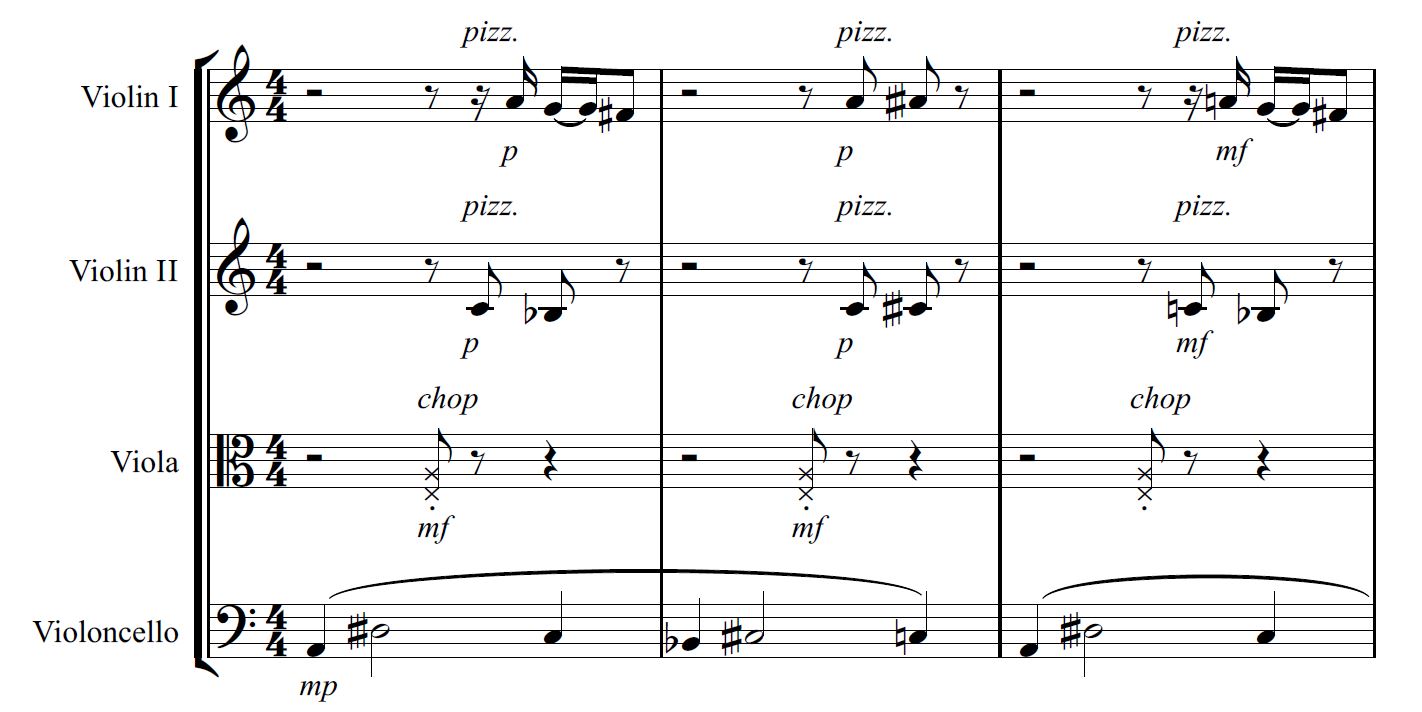The wobbly ladder – a microtonal String Quartet composition
Since Arnold Schoenberg coined the phrase “Emancipation of dissonance”, composers have, unapologetically , deviated from conventional tonalism, which is no bad thing. However, whilst the 12 tone school is firmly establised, other forms of modern music are being developed that challenge the composer as well as the listener. Our ability to compose a piece of music relies on the principle that we could organise the notes in such a way that we, the composers, can interpret the music we are writing. What if could break away from the bounds of our interpretations of the music we are writing?
I am reminded of what Edgard Varese said….
Music as I conceive it [consists in] the movement of sound-masses, of shifting planes…..When these sound masses collide, the phenomena of penetration or repulsion will seem to occur. Certain transmutations taking place on certain planes will seem to be projected onto other planes, moving at different speeds and at different angles. There will no longer be the old conception of melody or interplay of melodies. The entire work will be a melodic totality.The entire work will flow as a river flows.
Perhaps we have to think of the composition as a complete piece rather than thinking of how individual sections link up. By that I am not referring to how quickly we move from one melodic statement to another but rather the composition from start to finish. I think, when we hear a piece, we are not just listening but trying to predict what comes next. We do this by listening to the melody, if there is one and then try and figure out what’s coming next. If there is no tonic, and its component parts, somewhere in the piece, its impossible to predict. What happens in the case of microtones? If I play a note on the piano, say A and then if I could play A 1/4#, it would simply sound like A but out of tune, so if I arrange scales around this type of structure, it will sound like drifting between something tonal and something going out of tune….atleast I think so.
For a while I have been working on a rather challenging piece I call “The Ladder”. Unlike my other compositions, this piece is a deviation from my usual compositional style, working with more electic intervals deliberately embellishing dissonance. I will also be adding some microtones.
These microtones are chosen carefully for their colour rather than to add variety. I have not liberally scattered them all over the score, but in specific places. There are parts of the piece that sound like a dance, but like no dance you have ever heard before. Here is an extract of the score….



